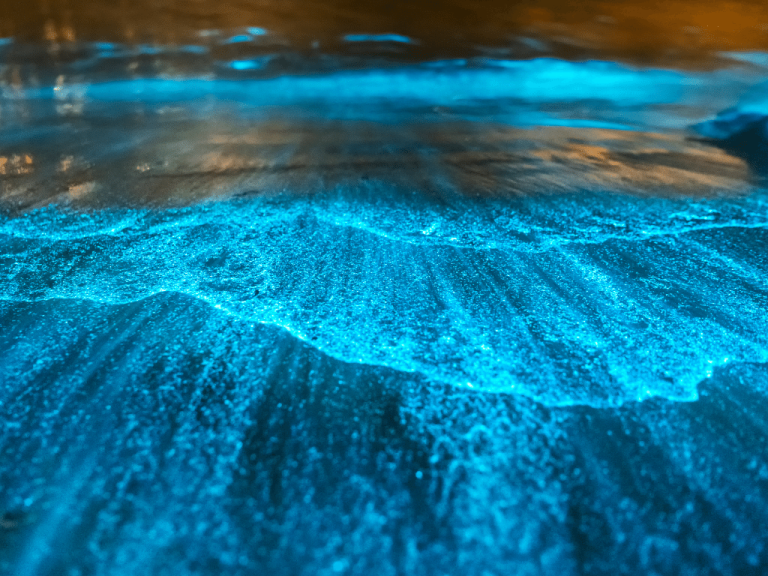For a long time, stories of glowing oceans have been widely circulated, and Chinese people even refer to this phenomenon as “sea fire.”
Do oceans really glow?
Some oceans do indeed glow. When the seawater is stirred, it can flash and even splash with “sparks”! No wonder some experienced sailors are often confused by this phenomenon. For example, on the night of August 11, 1909, when the ship “Ambria” was heading towards Colombo, the crew noticed a light in the southeast direction. Initially, they thought it was the lights of a city or port. But as the light grew stronger, they realized it was not city lights but a band of light emanating from the ocean itself. During World War II, when the American fleet first sailed towards Japan, they also encountered this glowing ocean phenomenon, mistakenly thinking it was a Japanese fleet.
The glowing of seawater is a trick played by some bioluminescent organisms in the ocean.
On summer nights, haven’t you often seen fireflies glowing? In ancient times, before electric lights, people would catch many fireflies and put them in mesh bags to use as lanterns. The glowing of seawater is quite similar to this phenomenon. When seawater contains many bioluminescent organisms, it can form light bands and “sparks” under certain conditions.
There are many types of bioluminescent organisms in the ocean, the most important of which are planktonic organisms ranging from about 0.2 millimeters to 5 millimeters in size, with the most common being dinoflagellates. The diameter of a dinoflagellate is less than 2 millimeters, and individually they resemble fish eggs. If there are 200 of them in one liter of seawater, they can emit a faint light. If their number increases to 1000-2000 per liter, the seawater can produce a strong glow when disturbed by fish swimming, ships passing, or wind waves. However, these lights are not easily visible during the day or on bright moonlit nights; they are most noticeable in the dark of night when the water surface is disturbed.
In some areas, seawater can emit a uniform milky white glow even without external disturbance or the influence of day and night changes. This is caused by extremely tiny bioluminescent bacteria in the seawater.
Various bioluminescent plankton and bacteria can appear independently in nature or mixed together, but they do not exist in large quantities in every ocean. Bioluminescent bacteria primarily reproduce in estuaries, harbors, and areas where cold and warm ocean currents intersect, as they can obtain abundant organic matter in these places. Therefore, the magnificent sight of glowing oceans can only be seen in certain parts of the sea.

